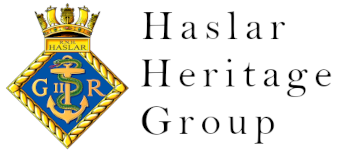History
Haslar – A History. Download this PDF file (Acrobat Reader required). This document gives the reader a brief history from Build to the Modern Day. Written by Eric Birbeck.
This article first appeared in the Army and Navy illustrated 1897 and is presented as written at the time of being published. Eric C Birbeck MVO Haslar Heritage
The Royal Haslar Hospital had a long and distinguished history in providing medical care to the Royal Navy for over 250 years and more recently to all three Services and Civilians.
After submissions to King George ll by the admiralty planning for the hospital commenced in 1745, Haslar was to be one of three proposed hospitals to provide hospital care for Sailors of the Fleet. The building of the hospital took 16 years and was completed in 1762, but due to over expenditure the fourth side was not completed.
Haslar was designed by Theodore Jacobson FRS in the manner of the Foundling Hospital. Building was under the direction of James Horne, a surveyor and John Turner, a Master Carpenter from Portsmouth Dockyard. D. James Lind (‘The Father of Nautical Medicine’ and one of the first physicians at Haslar) in writing to friend in 1758 described Haslar as “an immense pile of a building and when complete it will certainly be the biggest hospital in Europe!”
By 1753, with the hospital only half built, the situation concerning sick and wounded sailors in Portsmouth and Gosport area was desperate; patients were already living in the builder’s accommodation in the grounds of Haslar. Consequently the first hundred patients were admitted into the first stage of the hospital on the 12 October 1753 but no record of a formal opening of the Royal Hospital Haslar can be traced.
The original hospital plans included a chapel within the main hospital, which was to have been sited in the fourth section of the quadrangle building. This part of the hospital was never built and a separate church, St. Lukes was completed in 1762 to serve staff, their families and patients.
The first decades at Haslar were not without problems; there are may accounts of drunkenness and petty scandal amongst both staff and patients. The patients being “pressed men” were escaping from Haslar in large numbers necessitating a guard of soldiers from Fort Monckton. Haslar at this time resembled a prison more than a hospital. Soon the hospital buildings became crowded, discharged pensioner sailors lived in the attics, staff and their families also shared the main building.
Following various Admiralty inspections in the late 18th century the hospital underwent many changes and the lot of the sailor as a patient was changed for the good. During the 19th century many Army casualties from both the Peninsular and Crimean wars were treated at Haslar. Such was the fine treatment given by Haslar to the Army that the hospital was held as a shining light to Nursing by the Army.
During the many wars of the 20th century, Haslar continued to grow in professional and technological ability in the treatment of its patients. In 1954 the word Naval was formally included in the title of the hospital only to be removed again in 1996 when Haslar became the core Tri-Service hospital.
In celebrating the many years of The Royal Hospital Haslar we must remember those who both designed and built the hospital from bricks made of local clay and those who have served in the hospital throughout the centuries. We must also remember the patients whom, through a vision of the Admiralty, the Royal Hospital Haslar came to be built.









